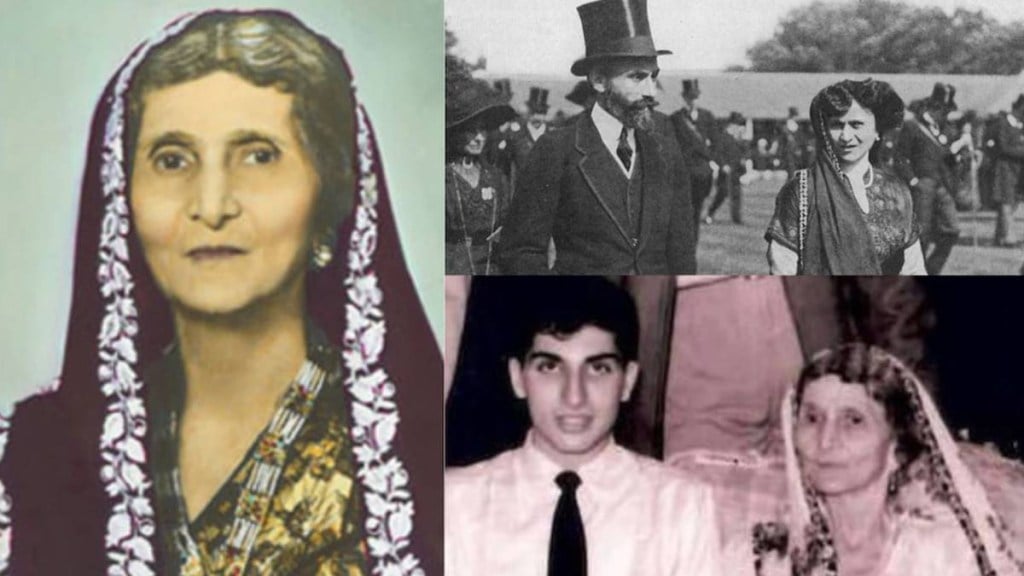The Tata Group, founded by Jamsetji Nusserwanji Tata in 1868, is a symbol of business excellence, innovation, and philanthropy. The conglomerate, with roots in India, has grown into a global leader across multiple industries, from steel and automobiles to software and hospitality. A fascinating chapter of the Tata Group’s legacy is the story of Navajbai Sett, the first woman to serve as a director of Tata Sons. Her contributions to both the company and society have had a lasting impact, cementing her place in Tata’s history.
Navajbai’s life journey is intertwined with both personal and professional challenges. After the death of her husband, Ratanji Tata, she stepped into the leadership void, taking charge of the family’s business interests and playing a key role in several philanthropic endeavors. This article explores the life, legacy, and contributions of this remarkable woman who played a pivotal role in the early years of Tata Sons’ growth.
Early Life and Marriage to Ratanji Tata
Navajbai Sett was born into a prominent Parsi family, the daughter of Ardeshir Merwanji Sett. In 1892, she married Ratanji Tata, the younger brother of Dorabji Tata and the son of the founder of the Tata Group, Jamsetji Tata. The Tatas were one of India’s most influential business families, and Navajbai quickly became an integral part of the family’s social and business circles.
In 1915, Navajbai and Ratanji moved to England, where they spent several years. The couple acquired a magnificent residence, York House in Twickenham, which had previously belonged to the Duke of Orleans. During their time in England, they mingled with some of the most elite circles, including British aristocracy and even royalty, forming friendships with King George V and Queen Mary.
Their personal life, while marked by significant wealth and privilege, was also tinged with tragedy. In 1918, Ratanji Tata passed away unexpectedly at the age of 41, leaving Navajbai a widow at a young age. Despite her personal grief, Navajbai chose to step into the role of business leader, taking charge of the Tata family’s interests and becoming the first female director of Tata Sons in 1925.
Navajbai Sett’s Leadership and Contributions to Tata Sons
Navajbai’s leadership at Tata Sons began in 1925, following the death of her husband. As the first woman to serve as a director, she broke through the glass ceiling in a male-dominated business environment, taking on the mantle of responsibility in an uncertain time for the Tata family. Despite not having direct experience in business management, her sharp intellect, and inherent leadership skills enabled her to guide the company with poise and foresight.
During her tenure, Navajbai was instrumental in stabilizing the family’s business interests and ensuring that the legacy of Ratanji Tata was preserved. She made key decisions regarding the expansion of Tata companies and also managed the family’s investments with the same care and diligence that had characterized her husband’s work. One of her major contributions was overseeing the completion of Tata House in Bombay, a palatial residence that her late husband had envisioned but did not live to see.
Under her stewardship, the Sir Ratan Tata Trust, which was created in 1919, grew considerably. The Trust’s philanthropic efforts focused on education, healthcare, and the upliftment of underprivileged communities. In 1932, Navajbai was appointed chair of the Trust, further cementing her role as a leading philanthropist in Indian society.
Philanthropy and Social Initiatives
Navajbai Sett’s contributions went beyond corporate leadership. She was deeply committed to social causes, particularly the welfare of disadvantaged women. Her compassion led her to establish an institute in 1926 in memory of her late husband, Ratanji Tata, to provide meaningful employment opportunities for elderly and underprivileged Parsi women. This institute, which aimed to provide sustenance and dignity to women in need, eventually evolved into the Ratan Tata Institute (RTI), known for its contributions to the local community.
Her commitment to philanthropy extended to her assets. Navajbai donated several properties that she had inherited from Ratanji Tata to charitable causes. Among her notable philanthropic endeavors was the transfer of her husband’s priceless art collection to the Prince of Wales Museum in Bombay, ensuring that the cultural heritage was preserved for the public.
Legacy and Final Years
After the death of Ratanji Tata, Navajbai dedicated much of her life to the completion of the Tata House in Bombay. This grand residence was intended to reflect the grandeur of the Versailles Palace but, sadly, Ratanji Tata did not live to see it finished. After Navajbai’s passing, the Tata House became the symbol of the Tata family’s enduring legacy.
In her later years, Navajbai continued to serve as a guiding figure in the Tata Group’s business and philanthropic affairs. She lived the rest of her life in the Tata House, where she also found peace in knowing that her efforts to preserve the Tata legacy would endure. She passed away in 1965, but her influence continued through her grandson, Ratan Tata, who later became the face of the Tata Group and led it to new heights on the global stage.
Navajbai Sett: A Woman Ahead of Her Time
Navajbai Sett’s life story is a testament to strength, resilience, and foresight. As a pioneering woman in a male-dominated world of business, she was far ahead of her time. Her leadership of Tata Sons and her immense contributions to society reflect not just a woman of great intellect but also one of deep compassion.
Her role as the first female director of Tata Sons marked a significant milestone in the history of the Tata Group. Through her charitable work and vision for the future, she ensured that the legacy of the Tata family continued to thrive, both as a business empire and as a force for good in society. Today, the Tata Group is valued at over $24 trillion, and its success is a reflection of the enduring influence of leaders like Navajbai Sett, who helped shape its path in its formative years.
Navajbai’s life and work continue to inspire future generations, particularly women in leadership roles. She remains a true pillar in the history of the Tata family and an enduring symbol of the values that have defined the Tata Group for nearly two centuries.







